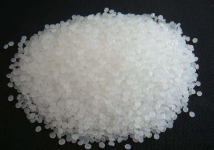read: 751 time:2025-06-24 09:24:00 from:化易天下
The stability difference between the phenol molecule and the phenoxide ion is a fundamental concept in organic chemistry, especially when exploring the behavior of acidic and basic compounds. Understanding why the phenol molecule is less stable than the phenoxide ion involves a detailed look at their structural, electronic, and resonance characteristics.
Phenol (C6H5OH) consists of a hydroxyl group (-OH) attached to an aromatic benzene ring. In its neutral form, phenol has no charge on the oxygen atom. However, when phenol loses a proton (H+), it forms the phenoxide ion (C6H5O−), which carries a negative charge on the oxygen atom. This deprotonation is the key event that leads to increased stability in the phenoxide ion.
A major reason why the phenol molecule is less stable than the phenoxide ion is the difference in resonance stabilization. In phenoxide ion, the negative charge on the oxygen atom can be delocalized over the aromatic ring through resonance. The oxygen atom shares its electron density with the benzene ring, allowing the negative charge to be distributed across the ortho and para positions of the ring. This delocalization of the negative charge over a larger structure significantly stabilizes the phenoxide ion.
In contrast, the phenol molecule lacks this extensive resonance stabilization because the oxygen in the hydroxyl group retains a lone pair of electrons that cannot participate in resonance to the same extent. The electron density remains localized, making the phenol molecule less stable.
Another factor contributing to the lower stability of the phenol molecule compared to the phenoxide ion is the inductive effect. In phenol, the hydroxyl group is electronegative and withdraws electron density from the benzene ring through the inductive effect. This withdrawal slightly destabilizes the phenol molecule because it creates a partial positive charge on the ring, opposing the electron-rich nature of the benzene ring.
On the other hand, in the phenoxide ion, the oxygen atom already carries a negative charge, and the inductive effect helps stabilize this negative charge by dispersing it over the benzene ring. This dispersal of charge enhances the overall stability of the phenoxide ion relative to the phenol molecule.
The difference in stability between the phenol molecule and the phenoxide ion also explains the acidic nature of phenol. Phenol is more acidic than typical alcohols because the resulting phenoxide ion is particularly stable. The greater the stability of the conjugate base (phenoxide ion), the stronger the acid (phenol). This relationship underscores why the phenol molecule is less stable than the phenoxide ion—because the phenoxide ion benefits from both resonance and inductive effects, making it a much more stable species.
In conclusion, the phenol molecule is less stable than the phenoxide ion due to the absence of significant resonance stabilization in phenol and the destabilizing inductive effect of the hydroxyl group. In contrast, the phenoxide ion gains stability through charge delocalization across the aromatic ring and an inductive effect that disperses the negative charge. These factors combine to make the phenoxide ion a much more stable entity compared to the phenol molecule. Understanding this stability difference is crucial in the study of phenolic compounds and their chemical behavior.

Jincheng Petrochemical's 300000 ton polypropylene plant successfully trial production, 2024 polypropylene market analysis

The ABS market remains sluggish, what is the future direction?

Market differentiation of bisphenol A intensifies: prices rise in East China, while prices generally decline in other regions

The production method and process flow of silicone acrylic lotion, and what are the common raw materials